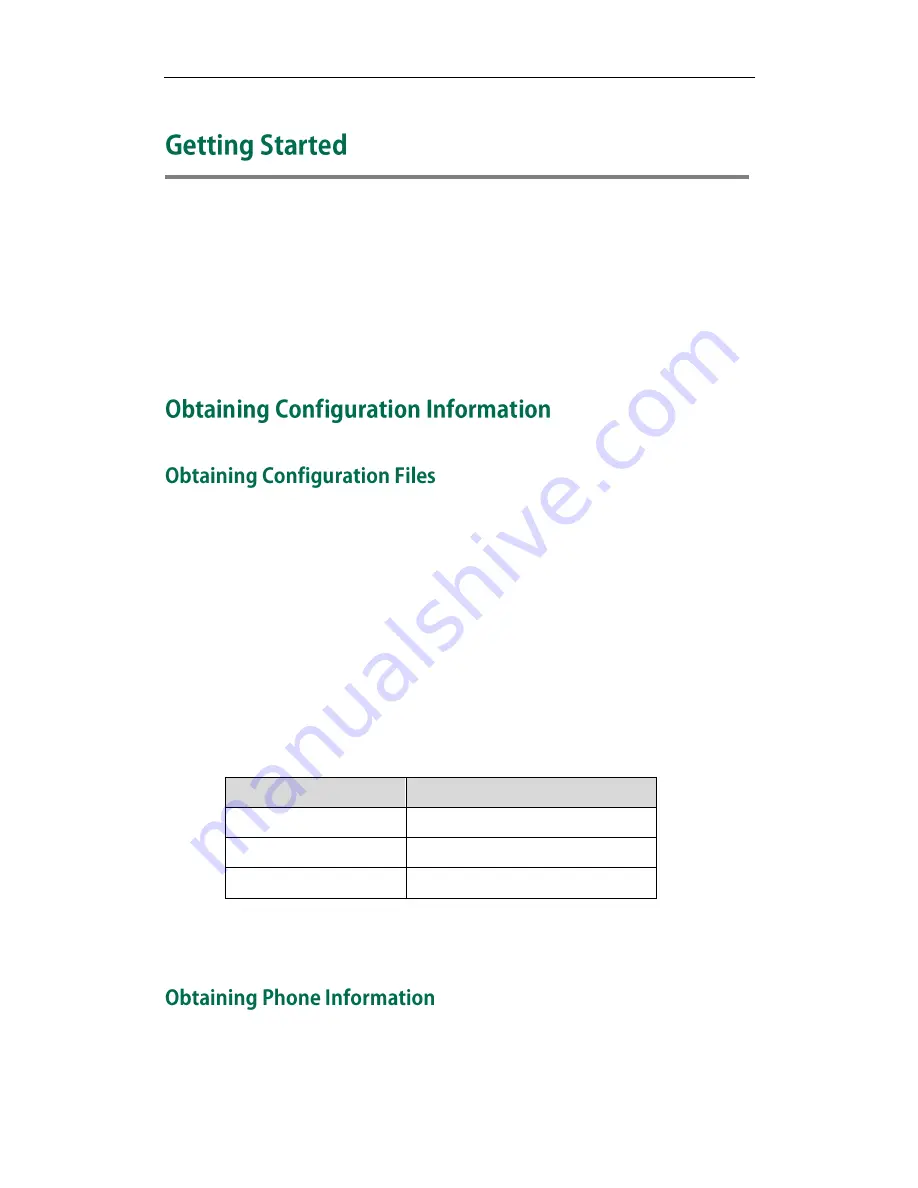
Getting Started
3
This section provides instructions on how to get ready for auto provisioning. The auto
provisioning process discussed in this guide uses the TFTP server as the provisioning
server.
To begin the auto provisioning process, the following steps are required:
Obtaining Configuration Information
Managing Configuration Files
Before beginning provisioning, you need to obtain configuration files. There are 2
configuration files both of which are CFG-formatted. We call these two files Common
CFG file and MAC-Oriented CFG file. The phone tries to download these CFG files from
the server during provisioning.
The MAC-Oriented CFG file is only effectual for the specific phone. It uses the 12-digit
MAC address of the phone as the file name. For example, if the MAC address of the
phone is 0015651130F9, the MAC-Oriented CFG file name must be 0015651130F9.cfg.
However, the Common CFG file is effectual for all the phones of the same model. It uses
a fixed name “y0000000000XX.cfg” as the file name, where "XX" equals to the hardware
version of the phone model.
The names of the Common CFG file for SIP-T4X IP phones are:
Phone Model
Common Configuration File
SIP-T46G
y000000000028.cfg
SIP-T42G
y000000000029.cfg
SIP-T41P
y000000000036.cfg
You can ask the distributor or Yealink FAE for configuration files. The IP phones can only
recognize configuration files using UTF-8 or ANSI encoding.
Before beginning provisioning, you also need the phone information. For example, MAC
address and the SIP account information of the phone.
Summary of Contents for SIP-T4X
Page 1: ...Table of Contents i...
Page 2: ......
Page 8: ...Yealink SIP T4X IP Phones Auto Provisioning Guide 2...
Page 21: ...Getting Started 15...
Page 35: ...Obtaining the Provisioning Server Address 29...
Page 41: ...Update Mode 35...
Page 47: ...Appendix 41...










































